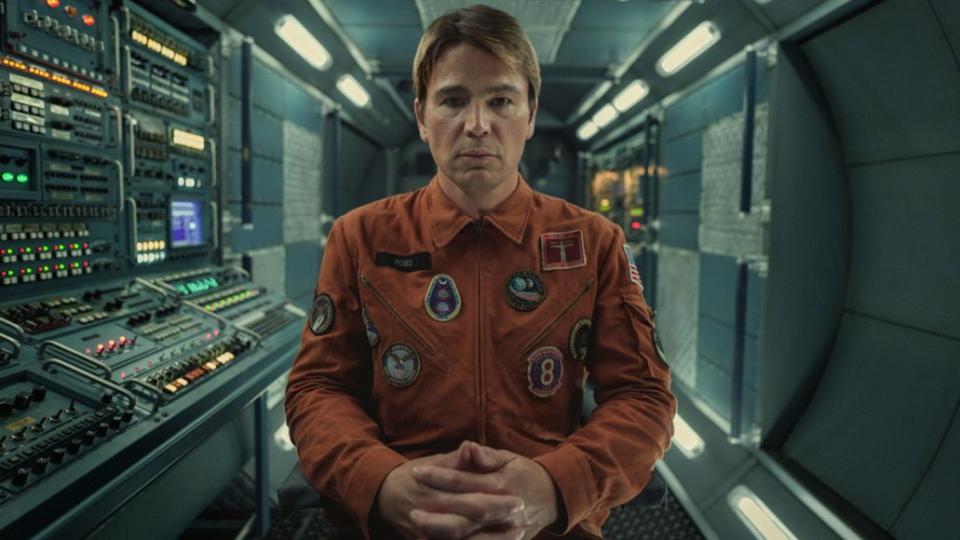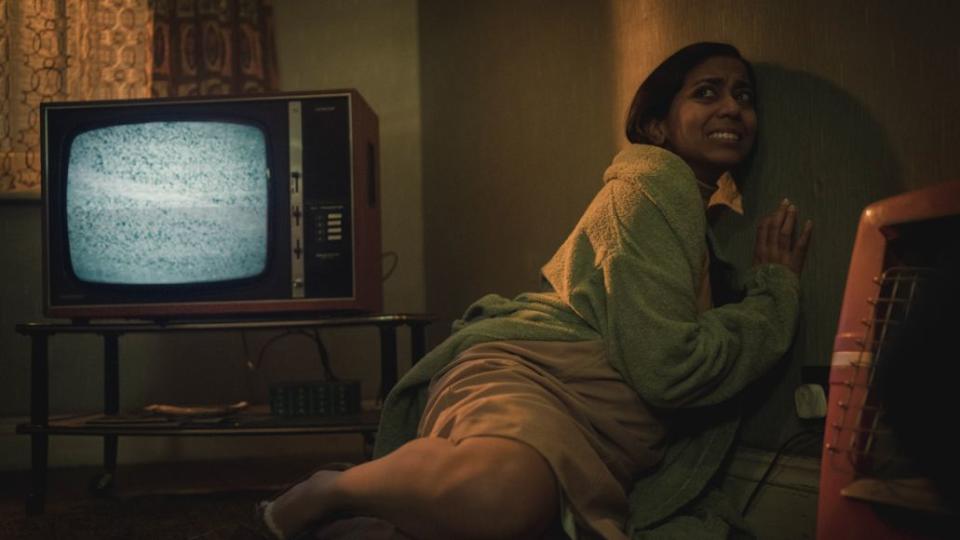Black Mirror Season 6 Is the Most Haunting to Date: Review
- Oops!Something went wrong.Please try again later.
- Oops!Something went wrong.Please try again later.
The post Black Mirror Season 6 Is the Most Haunting to Date: Review appeared first on Consequence.
The Pitch: If you’re a Black Mirror fan — or even just a casual viewer of Charlie Brooker’s Emmy-winning anthology series — then you’re very familiar with the emotional journey of watching any new-to-you episode: Okay, what’s this about?, followed by Oh, so is this the twist?, followed by Oh yeah, this is the twist!, followed by Oh no, now that I know the twist, what’s going to happen to these poor people?
This is because, like an SNL sketch, figuring out “the game” is a huge aspect of the Black Mirror experience, and Season 6 is as devoted to this idea as ever (as evidenced by the strict list of things critics were asked not to spoil in advance). Another huge aspect of the Black Mirror experience, though, is a wild diversity of genres and tones across every new batch of episodes — Season 6 definitely features that kind of spread, so let’s discuss each episode individually, before reflecting on the season as a whole…
“Joan Is Awful”: Easily the most meta episode of Black Mirror to date, “Joan Is Awful” explores the state of streaming media today through the lens of the titular Joan (Annie Murphy), an ordinary woman living an ordinary life… until she discovers that a streaming service has launched a new TV show which mirrors (heh) her life to a shocking degree, albeit with much better casting.
There’s a lot to unpack about what this episode, and by extension Brooker, has to say about the kinds of shows we’re seeing pop up on services just like Netflix “Streamberry” (the show’s in-world streamer — which you can explore on the Netflix home page right now). Perhaps the most genius element of “Joan Is Awful” is its casting, though, some of which you might not even properly appreciate until the final credits. It’s easily the most star-heavy ensemble of the season, for good reason.
“Loch Henry”: From heightened satire, the season shifts to a still kinda meta but spookier installment, in which a young man (Samuel Blenkin) and his girlfriend (Myha’la Herrold) return to his home village to make a documentary about one topic… only to discover a much more interesting topic in a locally notorious serial killer.
Since Black Mirror shifted from UK television to a Netflix production, the show has done its best to keep a global audience in mind while making sure at least one or two episodes per season are deeply rooted in some essential British-nesss. “Loch Henry” is very much part of that tradition, a classic example of small-town British murder drama, with love in its heart for old-school video technology.

Black Mirror (Netflix)
“Beyond the Sea”: This two-hander features Aaron Paul and Josh Hartnett as two astronauts in an alternate 1969 — the “alternate” part is important there, because in this universe, technology has evolved to the point where astronauts can travel the stars but also stay connected with home, via synthetic replicas that remain on Earth. Both men have very different relationships with their respective families, though, which get even more complicated as their mission progresses.
This season is dominated by period-set stories — however, in this case, the time period feels more like a fun detail than an essential part of the narrative; the episode could be set in an alternate 2023 with minimal differences. That’s as much as I can say without getting into spoilers, but this is the longest episode of the season at 80 minutes — a length that feels a little unnecessary, yet still allows the full scope of the drama to unfold.
“Mazey Day”: The season’s longest installment is followed by the season’s shortest, as a 2006 paparazzi photographer (Zazie Beetz) goes after a huge potential payday — a photograph of starlet Mazey Day, who’s gone missing from the set of her latest production.
It’s a little disorienting, as an Old, to see something set in 2006 treated as a period piece, and perhaps the most Black Mirror-y element of the episode is its nostalgia for the technology of this very specific era, from dial-up modems to memory cards. (At one point, Beetz’s character shows off her “new” 2nd generation iPod Shuffle with pride.) It’s also the slightest episode of the season, narratively, but here’s where the advantage of flexible runtimes comes in. If “Mazey Day” was the length of “Beyond the Sea,” or even a standard hour, it’d be a slog. At 40 minutes, however, it’s a tight and engaging little story.
“Demon 79”: Written by both Brooker as well as executive producer Bisha K Ali, the final episode of the season steps back to the year 1979, as a young South Asian shopgirl (Anjana Vasan) gets a supernatural visitor (Paapa Essiedu) who assigns her a shocking mission.
Based on that description, you might be surprised to learn that “Demon 79” is easily the most enjoyable episode of the season, thanks largely to the relationship between its core characters, and a script that gives the pair some great moments of banter. In addition, director Toby Haynes glories in the low-budget feel of 1970s horror cinema, with the cinematography deliberately invoking that ultra-saturated 16mm vibe — and the relevance of the episode’s political themes might be the most horrific aspect of it.

Black Mirror (Netflix)
The Verdict: Brooker, who is credited on every episode of the season, has said multiple times that Black Mirror isn’t a show about the evils of technology, or why we should fear the future. Instead, it’s about humanity at its best and worst, as amplified by the environment around us. That approach becomes starkly clear in Season 6, as its emphasis on stories set in the past feels like its own meta reminder of that fact. It’s not just the present or the future we have to worry about; the past contains plenty of opportunities to screw up a character’s life.
And that’s why this season is the show’s darkest to date — the only season that rivals Season 6 for head-to-head terror is the fourth. That six-episode season included extremely bleak installments like “Metalhead” and “Black Museum,” but its lighter episodes, like “San Junipero” and “U.S.S. Callister,” offer up a little more balance; by comparison, even the “fun” moments of Season 6 feature a lot less hope for humanity.
Shows evolve as they progress, however, and one of the most exciting things about following Black Mirror is seeing how the series continues to explore the essential question of what a Black Mirror episode can be. Not every episode is created equal (of the new season, “Joan Is Awful” and “Demon 79” might be the standouts, though there’s room for debate) — what remains constant is that it’s a treat to see this show’s imagination in action, especially in those moments just before you really know what’s going on… but think you might have a guess. Because whether or not you’re right, the journey is enough reason to watch.
Where to Watch: Black Mirror Season 6 is streaming now on Netflix.
Trailer:
Black Mirror Season 6 Is the Most Haunting to Date: Review
Liz Shannon Miller
Popular Posts

